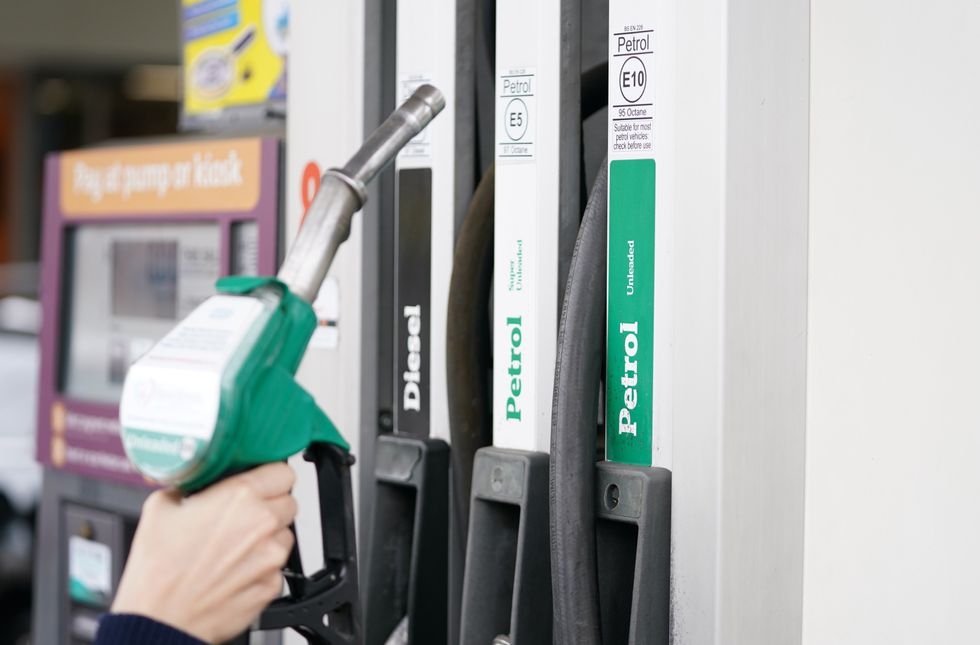Petrol and diesel prices could drop by as much as 6p in the lead-up to the Easter weekend as the world prepares for a potential recession.
It comes as the price of oil continues to drop, resulting in wholesale prices levelling out, which could see drivers benefit from cheaper fuel prices.
According to experts, drivers could see cuts of up to 6p a litre at the pumps ahead of the busy Easter weekend, with petrol expected to drop from 136p to 130p a litre and diesel from 143p to 137p.
Simon Williams, the RAC’s head of policy, explained that as long as the barrel carries on trading around or below the $65 (£50) mark, “retailers will be obliged to pass on the savings they’re benefitting from to their customers on the forecourt”.
Do you have a story you’d like to share? Get in touch by emailing[email protected]

According to the RAC, prices are estimated to drop by 6p at forecourts
PA/GETTY
According to the insurer, the price of oil fell to its lowest level since April 2021 on Monday, dropping to $63.49 (£49.48) a barrel.
The decrease in oil prices follows fears of a global recession after President Donald Trump announced worldwide tariffs, which have resulted in lower prices.
The RAC suggested that prices should be motivated to stay low as long as they remain scrutinised by the Competition and Markets Authority, “which only a week ago reported that it’s still concerned about a lack of competition in fuel retailing”.
Williams added: “Petrol should drop from its current UK average of 136p to 130p a litre and diesel from 143p to 137p. If unleaded were to fall to that level, it would be the cheapest since summer 2021. Diesel hasn’t been that low since September that year.”
Last month, the Competition and Markets Authority said it was “concerned about the intensity” of competition between fuel retailers, which resulted in drivers being hit by fuel price margins which “remain high compared to historic levels”.
Due to crude oil prices, petrol and diesel prices remained high between October 2024 and February this year, with various retailers offering different prices.
To combat this, the CMA agreed to launch a fuel monitoring function which aims to provide ongoing scrutiny of prices to encourage effective competition between retailers and help keep prices low for drivers.
Dan Turnbull, Senior Director of Markets at the CMA, said: “While there are several factors contributing to the higher fuel prices seen in recent months, fuel margins remain stuck at high levels, which impacts prices paid by drivers at the pump.”
He detailed how the ‘Fuel Finder’ scheme, which will come later this year, “should be a game changer for drivers – allowing them to find the cheapest fuel prices while boosting competition between fuel retailers”.
The scheme will also allow drivers to compare real-time fuel prices, via navigation apps, in-car devices and comparison websites.
The RAC found that at the end of March, the average price of petrol was 136.03p, representing a 3.6p decrease from the start of the month (139.62p) and a price last seen in late November 2024.
Williams warned: “We hope the CMA’s new powers to scrutinise prices will be the catalyst for fairer prices everywhere, along with the Government forcing retailers to publish prices within 30 minutes of changing them.”
LATEST DEVELOPMENTS:

Petrol and diesel prices are expected to continue falling due to global recession fears
PA
The RAC advised drivers to “never pay more” than the average prices published on RAC Fuel Watch, as analysis found that both petrol and diesel can be purchased for “considerably less”.
“We urge drivers not to presume the forecourt they’ve visited for years is necessarily the cheapest anymore,” the organisation added.










